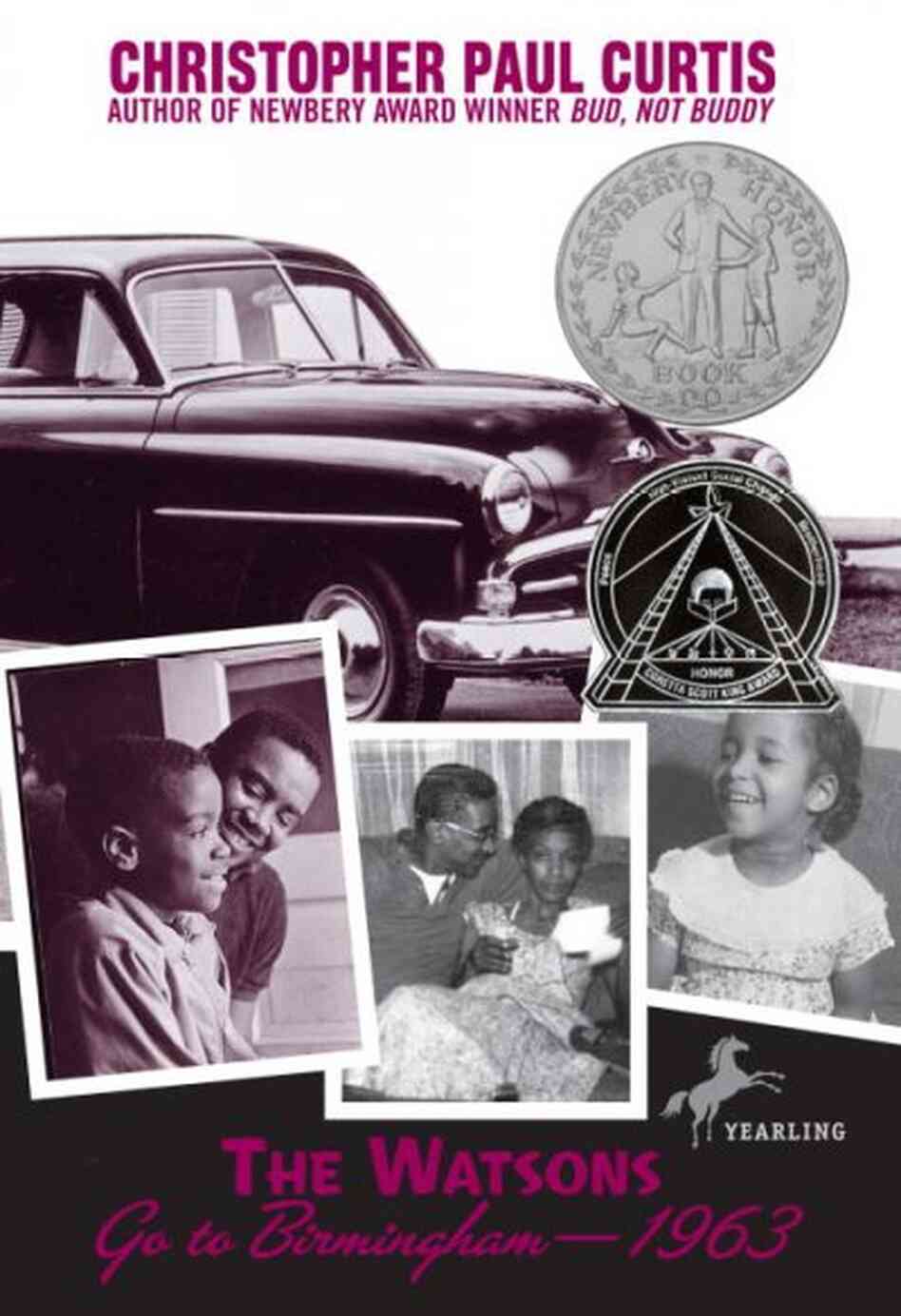by Christopher Paul Curtis
New York: Delacorte, 1995
I had never read anything by Christopher Paul Curtis before, but I had heard a lot of good things about another of his works, Bud, Not Buddy. In addition, I knew I was going out of town when I had to read The Watsons Go to Birmingham, 1963, so I read part of the story from the book and listened to the rest on an audiotape. It was very interesting to compare the two experiences.
In this story, the reader follows the "weird Watsons" (as the main character, Kenny, calls his family) as they go through everyday experiences--often comical--as well as a life-changing trip to visit Mrs. Watson's home town, Birmingham, AL. The Watsons are a typical family with two sons who are always getting into trouble somehow and one young daughter who looks up to both of them angelically. Throughout the story, we see Byron get into all kinds of trouble, from getting his mouth frozen to a car mirror to getting a "conk" (a perm and color) when his parents did not approve. Kenny, too, finds trouble; he loses his dinosaurs in an epic war against the Germans and does battle with a deadly "Wool Pooh" in the river. Then, the tragic bombings of Birmingham in 1963 change forever the way that Kenny and his family see the world. The Watsons Go to Birmingham, 1963, is at the same time a humorous family tale as well as a sobering coming-of-age story.
Although I enjoyed actually reading the text of this story, I have to say that listening to it on audiobook was so much fun! Hearing the expressions in different tones, particularly Kenny's trademark "tie me to a tree and say, 'Ready, aim, fire!'" was both entertaining and showed a window into Kenny's exaggerated black-and-white view of what is right and wrong (even if he doesn't always follow the rules himself!).
There are several themes running through this work. First, the importance of family is evident. Kenny's world revolves around his family; he learns social conventions from his brother, the popular kid in school, and his mother, the stern voice of reason. Everything that either boy does wrong eventually comes back to bite them, whether it is Byron's hair or Kenny's laughing at his new friend. The interactions between and among the family form Kenny's identity. A second important theme, or motif, is the Civil Rights movement. Because this story takes place in 1963, Curtis infuses examples of racist behavior into the text. Although Kenny lives in the North (Michigan), his town is still largely segregated. He knows only a few, if any, white people and lives and interacts mainly with kids "like him." When the family gets to Alabama, however, things are very different. The church bombings that Kenny almost witnesses are his first jarring example of how cruel people could be to African Americans, and these events seriously shake up his world view. In the end, the family theme comes back. His brother and sister pull him out of his contemplative mood and even his hiding place behind the family couch by reminding him of the good things in their lives, especially the love they all share.
This story would be excellent to include in a unit on the civil rights movement because it teaches the reader about the events of that period without preaching to them. As this video with Christopher Paul Curtis mentions, the students really are reading a story about a family. Through it, however, they learn so much more. I really enjoyed this book and I would definitely like to read some other works by Curtis.
A movie is being made, as well! Click here to read more about it.

No comments:
Post a Comment